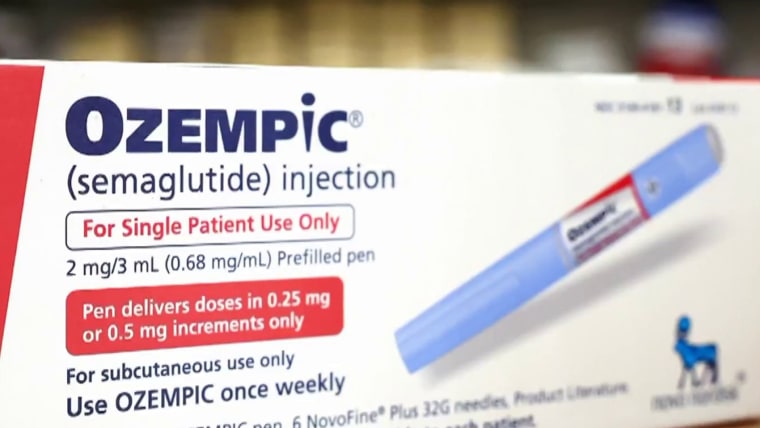SNAP Benefits Update: 9 States Could Face New Restrictions – Newsweek

Report on Proposed SNAP Reforms and Alignment with Sustainable Development Goals
Introduction and Legislative Context
- Legislation, titled the McStopping Chains from Using SNAP EBT to Make Entrees (McSCUSE ME) Act, has been introduced by Senator Joni Ernst.
- The Act aims to reform the Supplemental Nutrition Assistance Program’s (SNAP) Restaurant Meals Program (RMP).
- This initiative is part of a broader trend of legislative changes to the SNAP program, which currently serves over 42 million Americans.
Analysis of the Restaurant Meals Program (RMP) through the SDG Lens
SDG 2: Zero Hunger & SDG 10: Reduced Inequalities
- The RMP is designed to advance SDG 2 (Zero Hunger) by ensuring food access for the most vulnerable populations who cannot prepare their own meals.
- It specifically targets groups often facing heightened inequality, aligning with SDG 10 (Reduced Inequalities), by including:
- Elderly individuals
- Persons with disabilities
- Homeless individuals
- The program is currently operational in nine states (Arizona, California, Illinois, Maryland, Massachusetts, Michigan, New York, Rhode Island, and Virginia) with a pilot in Oregon.
SDG 3: Good Health and Well-being
- The current implementation of the RMP presents a challenge to SDG 3 (Good Health and Well-being).
- Data indicates that program expenditures are misaligned with nutritional goals, with $524 million spent over the last two years “almost exclusively on fast food.”
- California alone accounted for over $475 million of this spending, highlighting a systemic issue of public funds subsidizing consumption patterns that may negatively impact health outcomes.
Key Provisions of the McSCUSE ME Act and SDG Implications
-
Vendor Eligibility Reform: The Act proposes to limit participating vendors to grocery stores and other retailers that provide healthy prepared food options, thereby excluding fast-food chains.
- SDG Alignment: This provision directly supports SDG 3 (Good Health and Well-being) by actively promoting access to nutritious food and discouraging the consumption of less healthy alternatives.
-
Beneficiary Eligibility Reform: The legislation would remove automatic spousal eligibility, refining the focus on the primary intended beneficiaries.
- SDG Alignment: This measure seeks to improve the targeted efficiency of the program, which relates to the principles of SDG 10 (Reduced Inequalities) by ensuring resources are directed to those with the greatest need.
-
Accountability and Reporting: A requirement for an annual report will be instituted, detailing the number of participating vendors, the number of beneficiaries, and total program costs.
- SDG Alignment: This enhances transparency and accountability, aligning with SDG 12 (Responsible Consumption and Production) by ensuring the responsible and effective use of public funds.
Conclusion and Next Steps
- The proposed legislation initiates a critical policy discussion, balancing the immediate food security objectives of SDG 2 (Zero Hunger) with the long-term health and nutrition goals of SDG 3 (Good Health and Well-being).
- The McSCUSE ME Act aims to restructure the RMP to better align with national nutrition goals and ensure responsible stewardship of taxpayer funds.
- The bill is set to be formally introduced to the Senate for consideration.
Analysis of Sustainable Development Goals in the Article
1. Which SDGs are addressed or connected to the issues highlighted in the article?
-
SDG 1: No Poverty
The article discusses the Supplemental Nutrition Assistance Program (SNAP), which serves “more than 42 million low- and no-income Americans.” This program is a social protection system aimed at alleviating poverty by ensuring food access for the most economically vulnerable populations.
-
SDG 2: Zero Hunger
The core subject of the article is SNAP, a program designed to combat hunger and food insecurity. The debate revolves around how benefits are used, specifically through the Restaurant Meals Program (RMP), which allows certain recipients to buy prepared meals, directly addressing the goal of ensuring access to food.
-
SDG 3: Good Health and Well-being
The proposed legislation and the broader context of SNAP reforms focus on the nutritional quality of food purchased. The article mentions barring recipients from buying “‘junk food'” and the new bill’s aim to limit vendors to those offering “healthy prepared food options” instead of “fast food.” This directly connects to promoting health and preventing diet-related non-communicable diseases.
-
SDG 10: Reduced Inequalities
The RMP specifically targets vulnerable groups who may be unable to cook for themselves, including “elderly individuals, people with disabilities, and homeless Americans.” By providing a mechanism for these groups to access prepared meals, the program aims to reduce inequalities in food access. The proposed changes, such as removing “automatic spousal eligibility,” also pertain to the specific criteria for inclusion within these vulnerable groups.
2. What specific targets under those SDGs can be identified based on the article’s content?
-
Target 1.3: Implement nationally appropriate social protection systems and measures for all… and achieve substantial coverage of the poor and the vulnerable.
SNAP is a key national social protection system in the United States. The article’s discussion of its rules, coverage (“more than 42 million low- and no-income Americans”), and proposed reforms directly relates to the implementation and scope of this system for the poor and vulnerable.
-
Target 2.1: By 2030, end hunger and ensure access by all people, in particular the poor and people in vulnerable situations… to safe, nutritious and sufficient food all year round.
The article focuses on ensuring food access for vulnerable populations (elderly, disabled, homeless) through the RMP. The debate over “healthy prepared food options” versus “fast food” and “junk food” directly addresses the “nutritious” food component of this target.
-
Target 3.4: By 2030, reduce by one third premature mortality from non-communicable diseases through prevention… and promote… well-being.
The legislative effort to limit SNAP benefits for “fast food” and promote “healthy prepared food options” is a preventative health measure. It aims to improve the nutritional intake of recipients, which can help reduce the risk of diet-related non-communicable diseases like obesity and diabetes.
-
Target 10.2: By 2030, empower and promote the social, economic and political inclusion of all, irrespective of age, sex, disability… or other status.
The RMP is designed to ensure the inclusion of specific groups (“elderly individuals, people with disabilities, and homeless Americans”) who face barriers to preparing their own food. The program provides a tailored solution to ensure they are not excluded from food assistance, directly aligning with the goal of promoting inclusion for all, regardless of age or disability.
3. Are there any indicators mentioned or implied in the article that can be used to measure progress towards the identified targets?
Yes, the article mentions several quantitative measures that can serve as indicators:
- Number of beneficiaries in social protection programs: The article states that “SNAP currently serves more than 42 million low- and no-income Americans nationwide.” This figure is a direct indicator of the coverage of a social protection system (Target 1.3). The proposed legislation also requires reporting on the “number of beneficiaries” in the RMP.
- Government spending on social protection programs: The article provides specific financial data, such as “$524 million has been spent through RMP over the past two years” and “California accounted for the highest spending, with more than $475 million.” The proposed bill also requires reporting on “total program costs,” which serves as an indicator of the financial resources allocated to these programs.
- Number of participating vendors: The proposed legislation requires an “annual report detailing the number of participating vendors.” This can be used as an indicator to measure the accessibility and scale of the program, particularly after the new eligibility rules for vendors (excluding fast-food chains) are implemented.
4. Table of SDGs, Targets, and Indicators
| SDGs | Targets | Indicators |
|---|---|---|
| SDG 1: No Poverty | 1.3: Implement nationally appropriate social protection systems and measures for all… and achieve substantial coverage of the poor and the vulnerable. |
|
| SDG 2: Zero Hunger | 2.1: End hunger and ensure access by all people, in particular the poor and people in vulnerable situations… to safe, nutritious and sufficient food. |
|
| SDG 3: Good Health and Well-being | 3.4: Reduce premature mortality from non-communicable diseases through prevention and treatment and promote mental health and well-being. |
|
| SDG 10: Reduced Inequalities | 10.2: Empower and promote the social, economic and political inclusion of all, irrespective of age, sex, disability… or other status. |
|
Source: newsweek.com
What is Your Reaction?
 Like
0
Like
0
 Dislike
0
Dislike
0
 Love
0
Love
0
 Funny
0
Funny
0
 Angry
0
Angry
0
 Sad
0
Sad
0
 Wow
0
Wow
0



















































.jpg.webp?itok=0ZsAnae9#)



























